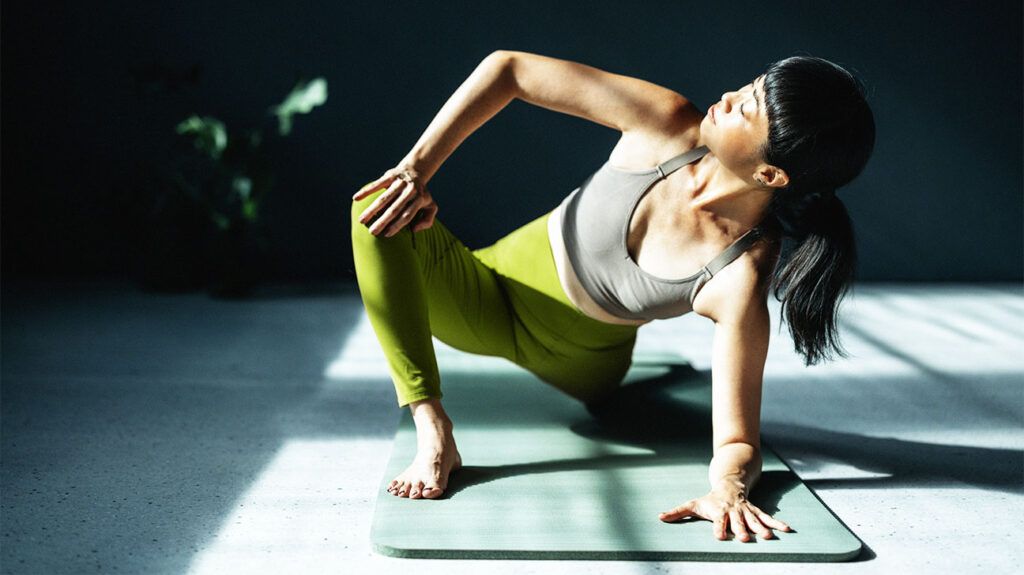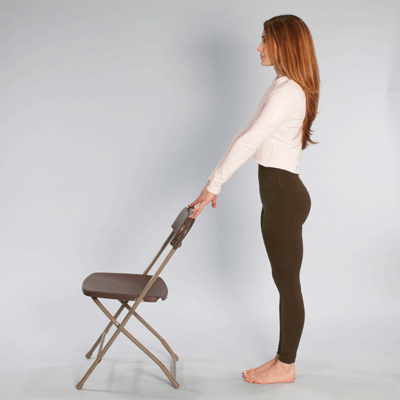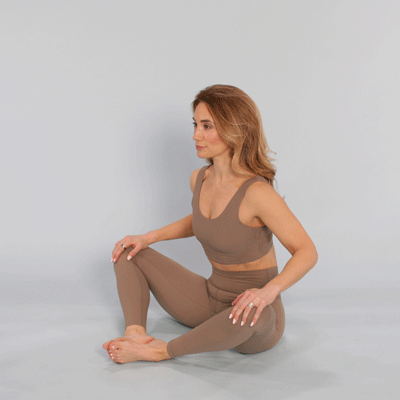Hip pain can have a range of causes, from minor injury to chronic inflammation. In many cases, gently exercising and stretching the hips can help relieve pain and restore mobility.
There are many possible causes of hip pain, ranging from muscle strains and injuries to arthritis and other inflammatory disorders.
Certain stretches and exercises may help relieve this pain. However, people should always speak with a healthcare professional before using stretches or exercises to relieve hip pain.

Although these exercises may result in temporary discomfort, they should not cause or aggravate hip pain. If an exercise causes pain, stop doing it or try going at a slower or gentler pace.
Anyone who has recently had a hip replacement should consult a doctor or physical therapist before performing any of the exercises below.
If a healthcare professional confirms the exercises are safe for an individual, they can start gradually and build up more repetitions over time.
Exercises 1 to 4
The first four exercises stretch the muscles around the hip joint, which may help reduce stiffness and improve joint mobility.
People should perform these exercises when they are feeling minimal pain and stiffness. A good time to do them is after a warm shower or bath, when the muscles are most relaxed.
Exercises 5 to 13
These exercises aim to strengthen the hip muscles to better support the hip joint, which may help relieve pain.
Resistance training is a form of exercise for developing muscular strength. In resistance training, people use either light weights or their body mass to create resistance for their muscles to work against.
People with significant hip pain or discomfort after resistance training may benefit from speaking with a healthcare professional. They may recommend reducing the repetitions and building up slower.
Healthy aging resources
To discover more evidence-based information and resources for healthy aging, visit our dedicated hub.

To perform knee lifts:
- Stand straight, using a chair, wall, or table for support if necessary.
- Keep the left leg straight and lift the right knee up toward the chest.
- If able, place both hands on top of the knee to help pull it in toward the chest.
- Hold the stretch for 10 seconds.
- Let go of the knee and gently lower the right leg back toward the floor.
- Switch legs and repeat the same previous steps with the other leg.
Repeat this exercise 10 to 15 times on each knee. People may also want to try doing the same number of repetitions for up to four sets.
Over time, people can increase resistance by adding ankle weights.

To perform a butterfly stretch:
- Sit on the floor with both legs out in front.
- Bend the legs at the knees and press the soles of the feet together.
- Place a hand on top of each knee and gently push them both down toward the floor. Apply pressure to the knees until there is a stretch, but do not push them further than is comfortable.
- Some people may like to extend the stretch by bending forward at the waist, keeping the back straight.
- Hold the stretch for 15 to 30 seconds and then relax.
Repeat the stretch two to four times.
To perform double hip rotations:
- Lie flat on the back.
- Bend the knees and bring them toward the body until the feet are flat on the floor.
- Gently rotate the knees to the left, lowering them toward the floor. Rotate the head to face the right while keeping the shoulders against the floor.
- Hold this position for 20 to 30 seconds.
- Slowly return both the head and knees to the starting position.
- Repeat on the opposite side.
People may also want to do sets of this exercise.
To perform hip and lower back stretches:
- Lying flat on the back, bend the knees and bring them toward the body until the feet are flat on the floor.
- Using the hands, pull both knees in toward the chest.
- Breathe deeply, pulling the knees closer to the shoulders with each exhalation.
- Go as far as is comfortable, then hold the position for 20 to 30 seconds. Breathe normally.
People may also want to try doing the same exercise for three sets.
To perform hip extensions:
- Stand upright with the legs straight and the feet shoulder-width apart.
- Extend both arms out in front and hold on to a chair, table, or wall for support.
- Keeping the right leg straight, lift the left leg backward without bending the knee.
- Lift the leg as far as possible without causing discomfort, then clench the buttock tightly and hold the position for 5 seconds.
- Switch legs and repeat the same previous steps with the other leg.
Repeat this stretch four to six times on each leg.
To perform hip abduction exercises:
- Stand upright.
- If necessary, use a sturdy surface, such as a wall, table, or chair, for support.
- Starting with the feet together, lift the right leg out to the right side. Keep the left leg straight and avoid rotating the hips.
- Hold the position for 5 seconds and then slowly return the leg to the starting position.
Do this exercise 10 times on one leg, then repeat it on the other side.
To perform heel-to-buttock exercise:
- Stand upright with the legs straight and the feet shoulder-width apart. If support is necessary, hold on to a chair, table, or wall.
- Bending the left knee, bring the heel up toward the left buttock with the top of the foot facing the floor. Be sure to keep the right leg straight and align the knees.
- Hold the position for 20 to 30 seconds.
- Slowly lower the leg and return to the starting position.
- Repeat the exercise on the opposite side.
Aim to do 5 to 10 repetitions on each leg.
To perform mini squats:
- Stand upright with the feet shoulder-width apart.
- If necessary, hold on to a chair, table, or wall for support.
- Keeping the back straight, gently lower the body by bending the knees until they are above the toes. The feet should remain flat on the ground.
- Hold this position for a few seconds, then slowly straighten the legs to return to the starting position.
Repeat these mini squats 10 times.
To perform short-arc quadriceps exercises:
- Lie flat on the back with a pillow, foam roller, or rolled-up towel beneath the right knee.
- Slide the right foot back toward the buttock, bending the knee.
- Engage the left thigh by fully straightening the knee and pressing the back of the knee into the towel. As a result, the left lower leg and foot will lift off the floor.
- Hold the position for 5 seconds and then gently lower the left leg back to the starting position.
Do 5 to 10 lifts on one leg and then switch to the opposite leg.
To perform static gluteals:
- Lie flat on the back and keep the legs straight throughout the exercise.
- Clench the gluteal muscles (buttocks).
- Hold the position for 10 seconds, then relax.
Do 5 to 10 repetitions. People may also want to try doing the same number of repetitions for two to three sets.
To perform a bridge:
- Lie on the back, bending both legs at the knee and placing the feet flat on the floor. Keep the arms by the sides of the body with the palms facing downward. If necessary, place a small pillow underneath the neck and head for support.
- Slowly engage the abs and glutes and lift the hips upward. Keep the shoulders and upper back on the floor.
- Hold the position for 5 seconds.
- Gradually lower the back and pelvis toward the floor, starting at the top of the spine. Roll down through the spine until the entire back is flat against the floor again.
Repeat this exercise 10 times.
To perform a chair stand:
- Position a chair so that its back is resting against a wall.
- Sitting on the front part of the seat, bend the knees and place the feet flat on the floor. Cross the arms, placing each hand on the opposite shoulder.
- Pivoting at the hips, recline back into the chair.
- Lean the upper body forward again and then slowly stand up. Keep the back, shoulders, and head straight while doing this.
- Slowly sit back down and return to the original position.
Repeat this exercise 4 to 6 times before gradually building up to 12 repetitions.
To perform a pelvic tilt:
- Lie with the back on the floor in a neutral position. Bend the knees and keep the toes facing forward.
- Pull the belly button in toward the spine, allowing the tailbone to tilt upward as the space under the lower back disappears.
- Tighten the glutes and hold for 5 seconds.
- Relax and return to a neutral spine.
Repeat this exercise 5 to 10 times. People may also want to try doing five sets of 20 repetitions.
The United Kingdom’s National Health Service (NHS) recommends gentle hip stretching exercises to ease hip pain.
However, if someone has severe hip pain or additional symptoms, including a fever, swelling, or changes to their skin color around the hip, they should seek immediate medical attention.
Following an injury, it is important to gently stretch a sore hip to get movement and strength back.
People should start with a small number of repetitions and build up slowly. Potential stretches include hip flexors and hip rotations.
Gently stretching and exercising the hips can help relieve pain, increase mobility, and strengthen muscles. People can experiment to find the exercises that work best for them and then incorporate them into a routine.
People can also work with a physical therapist to design an exercise plan to suit their needs.
People with severe, persistent, or worsening hip pain should see a doctor. It is important to stop or reduce any exercises that cause or aggravate hip pain.


